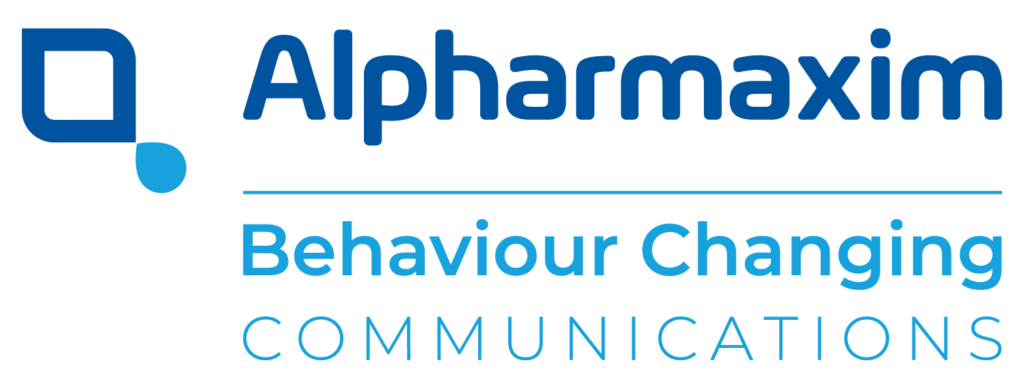Do blockchains have a future in healthcare?
Edward Johnson, Senior Medical Writer at Alpharmaxim Healthcare Communications

Blockchains in healthcare
There have been many instances throughout history where new technology is initially disregarded by most of the population: the printing press, aeroplanes, television and even the internet, to name a few. These technologies have become widely accepted across the globe, thanks to being championed by enough people to drive further development and implementation. Previously discussed almost exclusively in niche online forums, the term ‘blockchain’ is gradually entering the everyday lexicon of the general population. Could blockchains eventually join this select group of technologies?
It has been postulated that blockchains, which provide the ability to share critical information quickly and securely, will have a future role within healthcare and, if implemented correctly, may revolutionise the sector. Currently, there is a myriad of perceptions regarding blockchains – they are often associated with cryptocurrencies, such as Bitcoin or Ethereum, while some people associate the term with the trading of non-fungible tokens (more commonly known as ‘NFTs’), especially in the form of digital artwork. Yet fewer people have extolled the benefits of using blockchains in the secure transfer of healthcare information.
Depending on local regulations, potential uses of blockchains within healthcare include:
- providing patients with complete ownership and control over their medical records, allowing them to provide access to only those who need it, including healthcare professionals (HCPs), who can use them to issue prescriptions1
- the provision of anonymised patient data to HCPs, hospitals and laboratories, facilitating medical research and treatment1
- the ability to store, search for and share anonymised genomic information1
- accurate, real-time management of blood donation quality, storage and distribution2
- facilitation of the recording and reporting of results from clinical trials, including an in-built mechanism to provide a full history of changes to study protocols and the reporting and sharing of adverse event data.3
"It has been postulated that blockchains will have a future role within healthcare and, if implemented correctly, may revolutionise the sector."
What is a blockchain?
A blockchain is a secure database that contains a detailed, built-in ledger of amendments to the data that is contained within the chain.4 As the name suggests, a blockchain is comprised of ‘blocks’, which contain small amounts of collated data, arranged in a linear ‘chain’, with the most recent block superseding the previous one. Each block also contains a unique identifier called a ‘hash’ (essentially a long string of numbers and letters), which is used to identify the contents of the block, along with other important information, such as when the block was created. Crucially, each block also contains the hash of the previous blocks, which creates a record of the contents and history of the entire chain.4
One of the main features of a blockchain is that it is not contained on a single computer; instead, many computers within a network maintain a copy of the blockchain.4 When a new block is created, it is sent to every copy of the blockchain within the network. Each member of the network can validate the new block against multiple, identical copies of the blockchain. This ensures that it is extremely difficult to manipulate the content within an established blockchain, as edits to pre-existing blocks would have to be implemented on every copy of the blockchain.4 Data recorded within a blockchain is irreversible and permanently viewable to those within the network.4
A member of the blockchain network adds details to a patient record, creating a new block in the process. The other members of the network validate the creation of the new block by checking the credentials of the block creator and the block contents
Although the term blockchain is becoming more familiar to the general population, many are still unsure as to what it is and its potential use. Even those familiar with the term have different perceptions of how it works and what potential advantages it may bring to various industries. One of the first hurdles to overcome is the general lack of awareness of what a blockchain actually is (see ‘What is a blockchain?’ for a summary), because understanding the structure and function of a blockchain can be challenging.
While increasing the awareness of blockchains is imperative, one must consider that current perceptions may be limiting what people believe can be achieved with them, which in turn may be obscuring practical, tangible uses for this technology within healthcare.
If blockchains are to be globally implemented within healthcare, current beliefs and behaviours regarding them need to be addressed. Although there are many perceptions surrounding blockchains, we’ve identified a few contemporary beliefs and subsequently discuss how they could be addressed.
Potential roadblocks
‘Do we really need blockchains in healthcare? Aren’t we okay as we are?’
The current organisation of patient medical records within Europe and the USA is suboptimal – patient information is often stored in a small network based within a single organisation (for example, on a server at a doctor’s office). Different record systems often have poor compatibility with each other, which can delay the transfer of essential patient information (for example, if patient information needs to be sent from your doctor’s office to the emergency room of a hospital).5
Blockchain technology could be used to bypass these challenges; firstly, the uniform structure of blocks within a blockchain may facilitate the standardisation of information stored within a patient record, expediting and improving interpretation. Secondly, a blockchain can be implemented globally, across multiple healthcare settings.5 Finally, it is possible to put the patient at the very centre of a blockchain, providing them with control over who can access their medical records, whether it be their own doctor, clinical researchers or commercial entities. In theory, a patient would be able to immediately share their medical records with any doctor in the world.6 The current perceptions of whether blockchains have a place within healthcare could be gradually changed by highlighting the properties described above and by providing case studies of successful implementations; for example, Medicalchain™ is utilising blockchain technology to facilitate secure, fast and transparent exchange and usage of personal medical data – all with the patient retaining full control of who can access their data.7
‘Are blockchains secure? Who should be able to access them?’
Data breaches within the healthcare system are not uncommon; between April 2019 and March 2021, there were 3557 breaches of personal data in the UK across the health sector, the majority of which came from within the National Health Service (NHS).8 Furthermore, personal data held within the NHS was sent to the wrong recipient on 866 separate occasions during the same period.8 The security of personal medical data is a concern not just in the UK; in 2015, the medical records of 112 million patients in the USA were breached due to hacking or IT incidents.5 Consequently, there are widespread concerns among patients regarding potential breaches of privacy.9
The importance of maintaining patient confidence in the security of a healthcare system cannot be undervalued. The inherent properties of blockchains may provide much-needed security and integrity of patient medical information. They could facilitate access to patient data on the blockchain, while being easy to regulate and monitor, because any user of the blockchain will require permission to view the data and each transaction is stored on the blockchain with a unique identifier.5 This means that blockchains can provide a permanent record of exactly who has accessed patient data. Up-and-running examples are Akiri and Guardtime, which have already demonstrated the potential to safely store large amounts of patient data; the latter was instrumental in the implementation of blockchains in Estonia’s healthcare system.1 Highlighting the security of blockchains (especially in comparison with our current data systems) must be a key area of focus to help change current perceptions and to ensure their widespread adoption within healthcare.
‘Don’t blockchains require too much energy?’
The most publicised use of blockchains to date is within cryptocurrencies, where people can ‘mine’ for cryptocurrencies by using their computers (or vast banks of terminals at data centres) to conduct incredibly complex ‘proof-of-work’ calculations at the core of cryptocurrency generation. This process requires vast amounts of computing power, which is energy exhaustive; the global mining of Bitcoin alone is thought to consume 0.5% of the global electricity supply.10 In fact, public concerns over the energy requirements of blockchains led to Tesla reversing their decision to allow payment with Bitcoin.11
High energy consumption is not inherent to all blockchains; using Bitcoin as an example, it is the ‘proof-of-work’ principle that is the greatest source of energy consumption. This was implemented due to the highly competitive, financial nature of Bitcoin mining as a means to regulate the process and prevent fraudulent amends to the Bitcoin blockchain.12 However, it is not mandatory for a blockchain to employ a ‘proof-of-work’ principle; this is demonstrated within other cryptocurrencies that instead rely on a less energy-intensive ‘proof-of-stake’ principle, where individual people are selected to validate any additions to a blockchain.13
It is thought that the types of blockchain most likely to be used within healthcare have far lower energy requirements than those of Bitcoin.14 However, it remains to be seen whether healthcare blockchains will encounter energy usage issues. If suitable solutions are identified, it will be imperative to combat the negative perceptions of current blockchain energy consumption.
Conclusions
Blockchains have great potential within healthcare. Although the widespread implementation of blockchains in this area is still in its infancy, it is already becoming clear that not only the key technical aspects, but also the key perceptions surrounding blockchains, will need to be addressed. Education surrounding blockchains will be vital, covering everything from the provision of a basic understanding of the underlying technology to the practicalities of accessing and using blockchains. If this technology is going to be utilised to its full potential within healthcare, it is not just creators and investors who will have to be convinced; researchers, HCPs and, most crucially, patients will all need to be made aware of how blockchains could ultimately help them.
References
1. Daley S. How using blockchain in healthcare is reviving the industry’s capabilities. Built In. 30 July 2021. https://builtin.com/blockchain/blockchain-healthcare-applications-companies. Accessed 5 July 2022;
2. Le HT, Nguyen TTL, Nguyen TA, et al. BloodChain: A blood donation network managed by blockchain technologies. Network 2022;2(1):21–35;
3. Deloitte. Blockchain to blockchains in life sciences and health care. 2018. https://www2.deloitte.com/content/dam/Deloitte/us/Documents/life-sciences-health-care/us-lshc-tech-trends2-blockchain.pdf. Accessed 5 July 2022;
4. Hayes A. What is a blockchain? Investopedia. 24 June 2022. https://www.investopedia.com/terms/b/blockchain.asp. Accessed 5 July 2022;
5. Krawiec RJ, Housman D, White M, et al. Blockchain: opportunities for healthcare. August 2016. https://www2.deloitte.com/us/en/pages/public-sector/articles/blockchain-opportunities-for-health-care.html. Accessed 5 July 2022;
6. Reform. Reformer Thoughts. Blockchain in the NHS. December 2018. https://reform.uk/sites/default/files/2018-12/Blockchain%20in%20the%20NHS%20-%20VF_1.pdf. Accessed 5 July 2022;
7. Medicalchain. Medicalchain Whitepaper 2.1. 2018. https://medicalchain.com/Medicalchain-Whitepaper-EN.pdf. Accessed 5 July 2022;
8. Lintern S. Thousands of patients hit by NHS data breaches. Independent. 3 July 2019. https://www.independent.co.uk/news/health/data-nhs-patient-breaches-privacy-b1877154.html. Accessed 5 July 2022;
9. Campbell D. NHS plan to share GP patient data in England delayed to September. The Guardian. 8 June 2021. https://www.theguardian.com/society/2021/jun/08/nhs-plan-to-share-gp-patient-data-in-england-delayed-to-september. Accessed 5 July 2022;
10. Kim E. Bitcoin mining consumes 0.5% of all electricity used globally and 7 times Google’s total usage, new report says. Business Insider. 7 September 2021. https://bit.ly/3Il5gZL. Accessed 5 July 2022;
11. Hoskins P. Tesla will no longer accept Bitcoin over climate concerns, says Musk. BBC. 13 May 2021. https://www.bbc.co.uk/news/business-57096305. Accessed 5 July 2022;
12. Schletz M. Blockchain energy consumption: debunking the misperceptions of Bitcoin’s and blockchain’s climate impact. Data Driven Envirolab. 25 August 2021. https://datadrivenlab.org/climate/blockchain-energy-consumption-debunking-the-misperceptions-of-bitcoins-and-blockchains-climate-impact/. Accessed 5 July 2022;
13. Antolin M. Proof-of-work vs. proof-of-stake: what is the difference? CoinDesk. 25 May 2022. https://bit.ly/3ImcUmD. Accessed 5 July 2022;
14. Mehta S, Grant K, Ackery A. Future of blockchain in healthcare: potential to improve the accessibility, security and interoperability of electronic health records. BMJ Health Care Inform 2020;27(3):e100217


